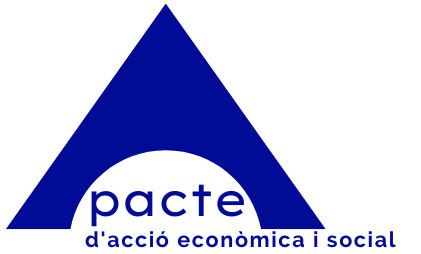1. Introduction: The Significance of Road Crossing in Cultural Contexts
The act of crossing a road is more than a simple daily task; it has long served as a powerful metaphor for transition, change, and risk-taking in various cultures. In the realm of entertainment, this motif has evolved into a compelling game mechanic that challenges players to master timing and decision-making. From ancient folklore to modern digital screens, crossing roads encapsulates universal themes of caution, courage, and progression.
The influence of road crossing games extends beyond mere amusement, shaping popular culture through iconic imagery and gameplay. As technology advanced, so did the complexity and educational potential of these games, reflecting societal values and technological innovations. This article explores the fascinating journey from early conceptualizations to sophisticated, modern adaptations, illustrating how this simple act continues to resonate culturally and function as an educational tool.
Educational Value
Technological Evolution
Cultural Variations
Modern Examples
Scientific Connections
Pop Culture & Music
Future Trends
Conclusion
2. Origins of Road Crossing Games: From Simple Concepts to Early Entertainment
Historically, crossing roads has been a symbolic element in storytelling, representing transitions between different life stages or social states. Folklore and children’s stories often depict characters navigating dangerous crossings, emphasizing caution and timing. These narratives laid the groundwork for interactive experiences.
With the advent of early digital technology, simple games emerged that focused on timing and risk assessment. Classic arcade games like "Frogger," released in 1981, exemplify this evolution, requiring players to navigate a frog across busy streets filled with moving vehicles. The core mechanics—timing, spatial awareness, and risk management—proved compelling, engaging audiences across generations.
Physical activities, such as children’s playground games, also incorporated crossing challenges, reinforcing motor skills and decision-making, thus blurring the lines between play and learning.
3. The Educational Value of Road Crossing Games
Beyond entertainment, crossing games serve as effective educational tools. They teach children critical skills such as decision-making, timing, and risk assessment. For example, games like "Frogger" and similar digital adaptations require players to evaluate traffic patterns and make strategic choices, mirroring real-world pedestrian safety considerations.
Research indicates that engaging with such games can enhance cognitive skills and motor coordination. A study published in the Journal of Educational Technology highlighted that children who played crossing games demonstrated improved reaction times and better understanding of traffic safety rules.
This connection has practical implications, as educators and safety organizations leverage digital crossing simulations to promote pedestrian awareness, especially in urban environments where risks are higher.
4. Evolution Through Technology: From Classic to Contemporary Games
Technological advancements transformed crossing games from simple 2D sprites to immersive 3D environments. Modern games incorporate narrative elements and storytelling to deepen engagement. For instance, virtual reality (VR) platforms now allow players to experience realistic crossing scenarios, enhancing experiential learning.
The rise of mobile gaming and social platforms has democratized access, enabling players worldwide to participate in crossing challenges through intuitive interfaces and multiplayer modes. Games like "Chicken Road 2" exemplify this shift, integrating high-quality graphics and engaging mechanics that appeal to a broad demographic. For more insights into contemporary crossing games, you can explore and I'm interested.
5. Cultural Variations and Symbolism in Road Crossing Games
Across different countries, crossing games reflect unique cultural values and symbolism. In Western cultures, crossing often symbolizes transition or new beginnings, while in Eastern traditions, it may represent harmony and balance. Game design incorporates these themes through character choices, environments, and narratives.
For example, in Japanese games, crossing scenes sometimes emphasize patience and respect for traffic rules, aligning with societal norms. Conversely, in some African narratives, crossing symbolizes resilience and overcoming obstacles, depicted through game challenges that mirror local stories and values.
This cultural variability influences game aesthetics, mechanics, and themes, enriching the global tapestry of crossing-related entertainment.
6. Modern Examples of Road Crossing Games
a. The Role of "Chicken Road 2" as a Contemporary Illustration
"Chicken Road 2" serves as a modern illustration of the timeless crossing principle, blending advanced graphics with engaging gameplay mechanics. It exemplifies how contemporary games leverage high-quality visuals and dynamic environments to keep the core concept relevant.
- Modern Graphics: Incorporates detailed animal characters, vibrant backgrounds, and smooth animations to captivate players.
- Gameplay Mechanics: Features challenging timing sequences, power-ups, and obstacle avoidance, reflecting the evolution of game design.
- Symbolism of Animals: The inclusion of roosters and other animals symbolizes alertness, vitality, and the natural cycle, connecting game themes to biological concepts.
This game illustrates how modern adaptations maintain educational value while offering entertainment through technological innovation. Interested readers can explore and I'm interested in experiencing such contemporary crossing challenges.
b. Other Notable Titles and Their Unique Approaches
Titles like "Crossy Road" and "Traffic Racer" each bring unique gameplay styles, from pixel art aesthetics to realistic traffic simulations. These games demonstrate diverse cultural influences and technological capabilities, blending education and entertainment seamlessly.
c. The Blending of Educational Content with Entertainment
Modern crossing games often include educational overlays, such as traffic safety tips, real-time feedback, and quizzes that reinforce learning. This fusion enhances the game's value as a tool for skill development and awareness.
7. Non-Obvious Perspectives: Scientific and Biological Connections
An intriguing biological connection lies in the anatomy of animals like roosters. Their combs contain hyaluronic acid, which is vital for tissue hydration and healing. This biological fact subtly links animals to game themes of vitality, resilience, and health, emphasizing how biology can inspire game narratives.
Environmental factors, such as habitat and behavior, influence how animals are portrayed in crossing games. For example, games featuring wildlife crossings highlight ecological concerns, promoting awareness of environmental conservation.
Educational crossover is also possible, where game design integrates biological facts to teach players about anatomy, ecosystems, and environmental science, enriching the learning experience.
8. The Influence of Music and Pop Culture on Road Crossing Games
A cultural milestone that profoundly impacted crossing imagery is The Beatles' Abbey Road album cover, which depicts band members crossing a zebra crossing. This iconic image cemented the crossing as a symbol of unity and transition in popular culture.
Music, media, and film continue to shape perceptions, with scenes of characters crossing streets or bridges often used to symbolize pivotal moments. These representations have influenced game motifs, making crossing scenes recognizable and emotionally resonant.
Cultural icons like Abbey Road popularized the crossing motif, inspiring countless artworks, advertisements, and digital games that evoke nostalgia and recognition, thus reinforcing crossing as a cultural symbol.
9. Future Trends and Innovations in Road Crossing Games
Emerging technologies such as augmented reality (AR) and virtual reality (VR) promise to revolutionize crossing games. Imagine immersing players in realistic cityscapes where they practice crossing safely in a controlled environment. Such applications can transform safety training and urban planning simulations.
Incorporating real-world data, like live traffic feeds, could lead to dynamic gameplay that adapts to actual conditions, making training more effective and engaging. These innovations could serve educational and safety purposes, fostering safer pedestrian behaviors.
Furthermore, integration with artificial intelligence (AI) could personalize challenges based on individual skill levels, making learning more targeted and effective.
10. Conclusion: The Continuing Evolution and Cultural Significance of Road Crossing Games
From ancient stories to sophisticated digital simulations, the concept of crossing roads has evolved into a multifaceted cultural phenomenon. Its enduring appeal lies in its universal themes of transition, risk, and growth, which resonate across societies and generations.
Technological advancements and cultural influences continue to shape crossing games, balancing educational value with entertainment. As innovations like AR and VR mature, the potential for these games to impact real-world safety and learning expands significantly.
"The act of crossing is more than a simple movement—it's a metaphor for life's ongoing journey, reflected vividly through games and culture."
In sum, the evolution of road crossing games exemplifies how a simple act can be transformed into a rich cultural and educational experience, continually adapting to technological and societal changes. Their future promises even more innovative ways to teach, entertain, and inspire.






